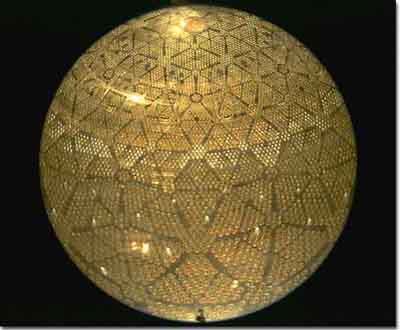Catching Neutrinos
The Sudbury Neutrino Observatory (SNO) in Ontario, Canada has been designed to "catch" neutrinos from the sun. SNO—located 2,000 m underground—uses a 1,000-ton heavy water target and 10,000 photomultiplier tubes to detect the light emitted when a neutrino interacts in the water. Although billions of neutrinos from the Sun reach each square centimeter of the Earth each second, neutrinos very rarely interact with any matter, including the heavy water. Currently, SNO counts less than one event per hour. Because of this low counting rate, neutrino detectors are located underground where the earth shields the detector from cosmic rays and other background radiation that would otherwise swamp the target and mask the neutrino events. SNO was built to provide new information to help solve the long-standing "solar neutrino problem," which arises because existing experiments detect fewer neutrinos from the Sun than theory predicts.


This view shows inside the 12-m diameter acrylic vessel holding the 1000 tons of heavy water and the array of photomultiplier tubes surrounding it..
Photo courtesy of Lawrence Berkeley Natinal Laboratory











